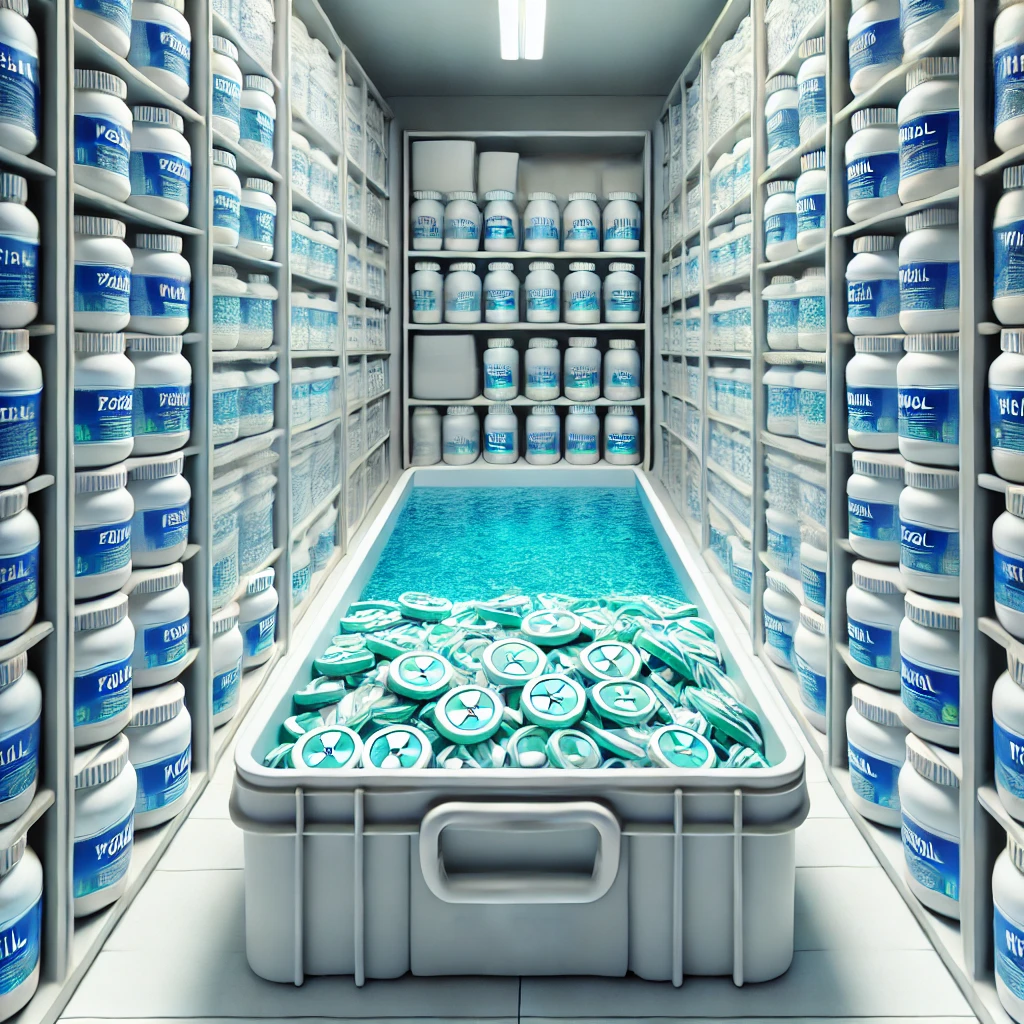Maintaining proper pool chlorine levels is essential for swimmer safety. However, chlorine requirements can vary with the seasons. Adjusting the amount of pool chlorine tablets you use according to seasonal changes ensures effective disinfection year-round. Understanding how different seasons impact chlorine needs is crucial for maintaining a clean and safe pool.

I. Understanding Seasonal Variations
Each season brings unique challenges to pool maintenance. During the summer, higher temperatures and increased swimmer load can deplete chlorine quickly. Conversely, in the winter, cooler temperatures and reduced usage can decrease chlorine demand. Recognizing these variations helps in adjusting pool chlorine tablets effectively. Moreover, weather conditions, sunlight exposure, and debris also influence chlorine levels.
II. Spring: Preparing for Increased Activity
Spring marks the beginning of pool season in many regions. As temperatures rise, more people start using the pool. Increased swimmer load requires higher chlorine levels to maintain water quality. During this time, it’s essential to increase the number of pool chlorine tablets used. Start by monitoring chlorine levels frequently. Gradually increase the dosage to match the rising temperatures and pool usage. This adjustment ensures the pool remains safe as activity increases.
III. Summer: Managing High Demand
Summer is the peak season for pool use. With more swimmers and hotter weather, chlorine levels can drop rapidly. During summer, it’s crucial to use more pool chlorine tablets. Higher temperatures cause chlorine to evaporate faster, reducing its effectiveness. Moreover, the sun’s ultraviolet rays can break down chlorine in the water. To combat this, increase the frequency of chlorine tablet dosing. Regularly test the water to ensure adequate chlorine levels. Additionally, consider using stabilizers to protect chlorine from sunlight degradation.
IV. Fall: Reducing Usage as Temperatures Drop
As fall arrives, temperatures begin to cool, and pool usage declines. During this season, you can reduce the number of pool chlorine tablets used. However, don’t eliminate them entirely. Even with reduced activity, the pool still needs chlorine to prevent algae and bacteria growth. Gradually decrease the dosage as swimmer load lessens. Continue to monitor chlorine levels to avoid under-chlorination. This gradual reduction helps maintain a clean pool while conserving resources.
V. Winter: Minimal Chlorine Requirements
Winter brings the lowest chlorine demand. In many regions, pools are closed or used infrequently. If your pool remains open, significantly reduce the number of pool chlorine tablets used. Cold temperatures slow down the growth of algae and bacteria, requiring less chlorine. However, continue to monitor chlorine levels to prevent any potential contamination. For pools that are closed during winter, maintain a minimal chlorine level to protect the water. This prevents the pool from becoming a breeding ground for harmful microorganisms.

VI. Monitoring and Testing: A Year-Round Necessity
Regular monitoring and testing are crucial regardless of the season. Use a reliable test kit to check chlorine levels frequently. Seasonal changes can be unpredictable, so it’s essential to stay vigilant. Test the water at least twice a week during the summer and once a week during other seasons. This practice helps in making timely adjustments to pool chlorine tablet usage. Consistent monitoring ensures that your pool remains safe and inviting throughout the year.
VII. Adjusting for Weather Conditions
Weather conditions can also affect chlorine levels. Rain, wind, and storms can introduce debris and contaminants into the pool. After a heavy rain, you may need to increase the number of pool chlorine tablets used. Rainwater can dilute chlorine, reducing its effectiveness. Wind can blow in leaves and other debris, which consume chlorine as they decompose. Therefore, it’s important to check chlorine levels after such weather events. Make the necessary adjustments to keep the pool water clean and balanced.
VIII. Using Pool Covers: An Additional Layer of Protection
Pool covers can help maintain chlorine levels, especially during off-peak seasons. By covering the pool, you reduce exposure to sunlight, which can degrade chlorine. Additionally, covers prevent debris from entering the water, reducing the chlorine demand. During winter, a pool cover can significantly reduce the need for pool chlorine tablets. However, continue to monitor chlorine levels periodically. A cover alone won’t completely eliminate the need for chlorine, but it can certainly help reduce it.
IX. Proper Storage of Chlorine Tablets
Storing pool chlorine tablets correctly is also important. Exposure to heat, sunlight, and moisture can degrade chlorine tablets, reducing their effectiveness. Store them in a cool, dry place away from direct sunlight. Proper storage ensures that your chlorine tablets remain potent, regardless of the season. This practice not only extends the shelf life of the tablets but also ensures consistent chlorine levels in the pool.
X. Conclusion
Adjusting the use of pool chlorine tablets according to seasonal changes is essential for effective pool maintenance. Spring and summer require higher chlorine levels due to increased pool activity and temperature. Conversely, fall and winter demand lower chlorine levels, reflecting reduced pool usage and cooler temperatures. Regular monitoring, weather condition adjustments, and proper storage further enhance pool safety and cleanliness. By following these guidelines, you can maintain a healthy, clean pool year-round, ensuring a safe swimming environment for all.



